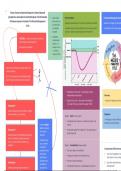Presentation
AQA A-Level Hazards (Colour-coded notes)
- Course
- Institution
Printable A4 Paper Size notes for the Water & Carbon Cycle section in the A-Level AQA 7037 Specification. Colour-coded and diagrams for easy and fun revision. Specific topics include: 'Destructive, constructive and conservative plate margins', 'Convection currents and sea-floor spreading', 'The nat...
[Show more]



